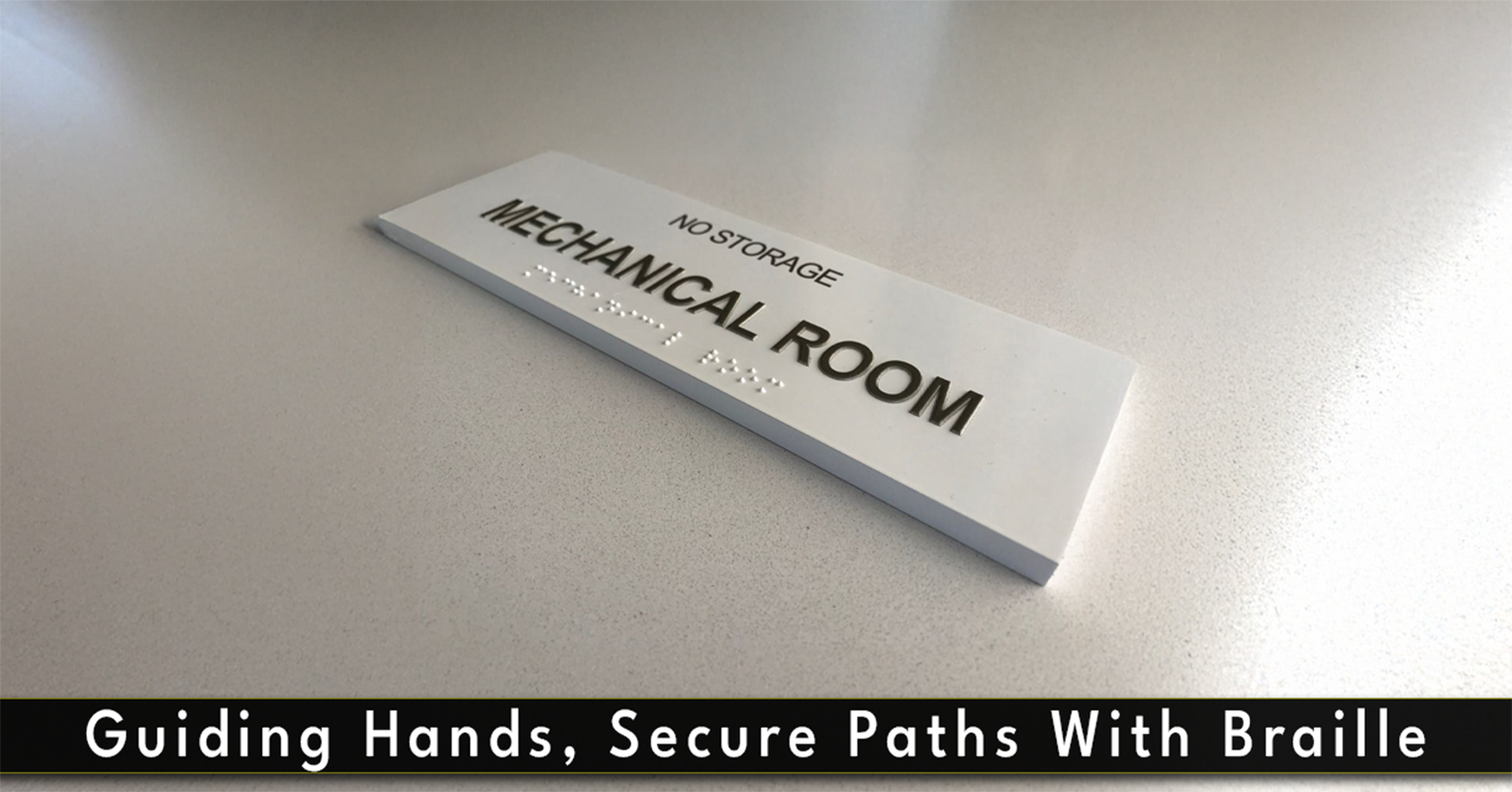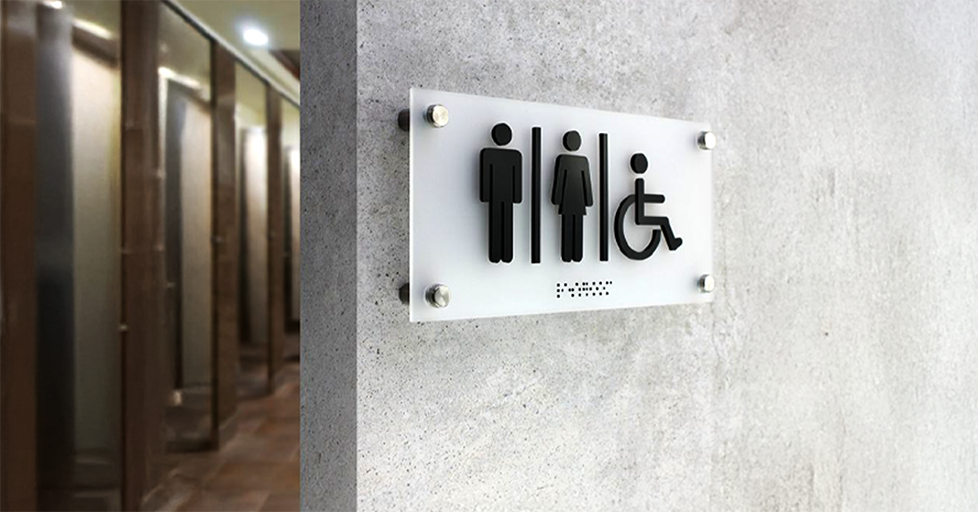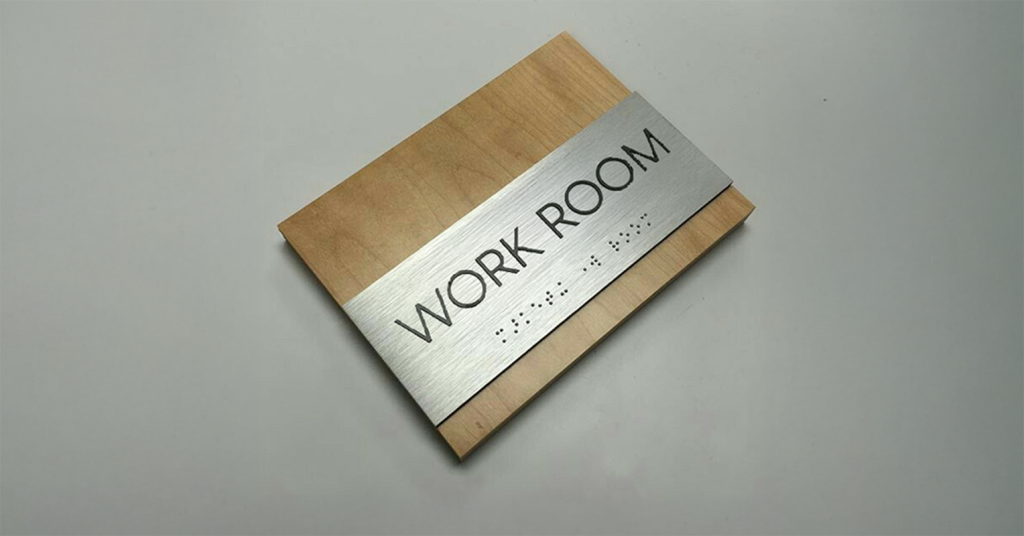Clarity For All: Why Your Business Needs High-Quality Braille Signs

Creating an accessible and inclusive space is no longer a courtesy, but a critical aspect of doing business. We search for accessible websites, ramps, and plenty of space, but we often take one of the most effective means of making a space easy to navigate for everyone for granted: signage. For people who are blind and/or have low vision, getting around a building without signage is nearly impossible. This is especially true when those Braille signs are good-quality Braille ones.
Signage is as much about compliance as it is about providing clients with every opportunity for a quality experience, as well as an extension of your brand. This guide will outline why committing to invest in your signage with Braille is critical for compliance, quality service, and your brand reputation.

Understanding the Anatomy of an Accessible Sign
People who think about Braille signs often think about the tactile dots only. Unfortunately, an effective and compliant sign requires more to understand and meanings :
Tactile Text and Graphics:
The letters, numbers, and symbols are raised from the sign surface to be read by touch.
Grade 2 Braille:
A corresponding translation of the tactile text in Grade 2 Braille (i.e., a shorthand version) follows the tactile text and is mounted at a proper distance from the text above it. (The dots themselves must also follow proper dome shape and distance apart for reading ease.
A sign with printed text and a scattering of dots under it is not compliant with the standard. Because effective Braille on signs is an exact science, meant to be effective and functional for the user.
Beyond Compliance: The Business Case for Inclusivity
While legal compliance is a primary driver for installing accessible signage, the benefits extend far beyond checking a box on a form.
For public buildings, corporate offices, and retail spaces, clear wayfinding is paramount. This is especially true for permanent room identification. Properly placed Braille office signs for restrooms, meeting rooms, elevators, and exits ensure that employees and visitors with visual impairments can navigate their environment independently and with dignity. It removes barriers and fosters a sense of belonging.

Style Meets Substance: The World of Custom Braille Signs
A common misconception is that accessible signage must be generic and unattractive, clashing with a carefully curated interior design. This couldn’t be further from the truth. The market for custom Braille signs has evolved dramatically, allowing for full integration with your brand’s aesthetic.
Whether your space is a sleek, modern corporate headquarters or a rustic, boutique hotel, you can get Braille custom signs that complement your style. You don’t have to sacrifice design for accessibility. Key considerations include:
- Material: While classic acrylic is common, other materials offer distinct advantages. For a sophisticated and durable option, many businesses are turning to metal Braille signs. Brushed aluminum, bronze, or stainless steel offer a premium, modern finish that is incredibly resilient to wear and tear. Wood, stone, and other materials can also be used to match your decor.
- Colour and Contrast: Compliance requires a high level of contrast between the text and the background for the benefit of those with low vision. However, this doesn’t limit you to black and white. A skilled designer can use your brand’s colour palette to create compliant, high-contrast signs that are both beautiful and functional.
- Typography: While fonts for tactile text must be sans-serif, you still have options to align the typography with your brand’s visual identity.
Choosing the Right Partner for Your Braille Signage
Implementing Braille signage correctly requires expertise. It’s crucial to partner with a signage provider like ARC India who is not just a manufacturer but an expert in accessibility standards. They will understand the specific requirements for dot height and spacing, mounting location and height, and the correct use of tactile pictograms.
When commissioning your signs, ask potential suppliers about their knowledge of current regulations. A reliable partner will guide you through the process, ensuring your investment is not only stylish but fully compliant, preventing costly mistakes and rework down the line.
In conclusion, accessible signage is a fundamental aspect of modern architecture and business management. It’s a feature that works silently to create a more equitable and welcoming world. By investing in high-quality, thoughtfully designed Braille signs, you are not just fulfilling an obligation; you are enhancing your brand, expanding your audience, and building a physical environment where everyone feels safe and respected.

